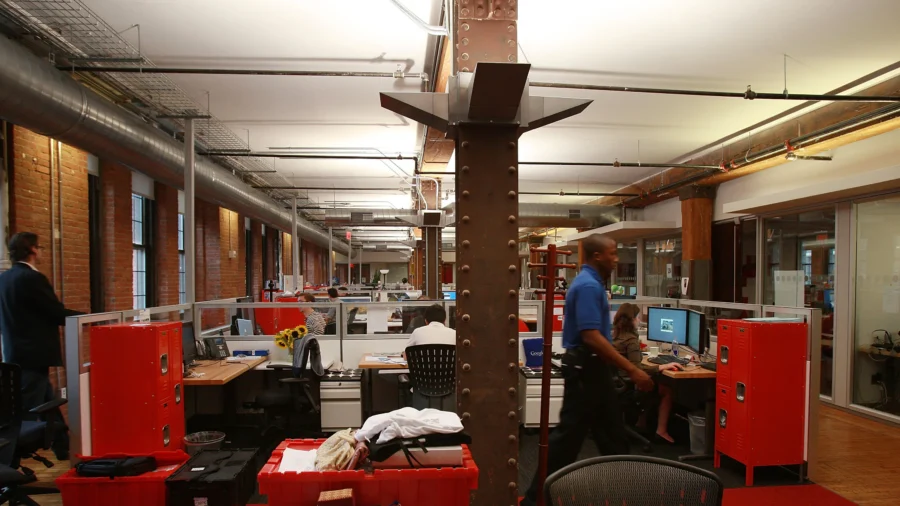A new report from industry experts says that in North America, tech companies are wasting $40 million every year on rent costs because of “new work patterns,” namely remote and hybrid work arrangements.
International design practice Hassell and workplace analytics leader Density released the report titled The State of Tech Industry Workspaces on Thursday, covering more than 1.4 million square feet of space in the industry.
The report found that under remote work arrangements that started during the pandemic and now allow employees to decide when to come into the office, the peak daily utilization rate of companies’ office space was only 29 percent.
Even companies that instituted mandatory, three-day, in-office policies only saw their peak utilization increase 17 percent, to 46 percent.
The study suggested companies may not be fully enforcing return-to-work (RTO) policies or that they are not being respected by employees.
Employees who do come into the office and have a choice about where to work often choose meeting rooms rather than offices, suggesting that employees are choosing to come into the office primarily for meetings.
Employees who get to choose when they come into the office choose meeting rooms 48 percent of the time, while those with three-day per week hybrid policies choose meeting rooms 29 percent of the time.
Hassel and Density found that the open-plan offices used by tech companies are not optimal for video calls and hybrid meetings that are an essential part of new work patterns. As a result, workers are using meeting rooms as private offices or phone booths 36 percent of the time, rather than for meetings.
Report author and Hassell Head of Research Daniel Davis said: “Tech companies have traditionally been workplace leaders. Their amenity-rich offices nurtured billion-dollar businesses and untold envy. Then the pandemic happened. Many quickly adopted hybrid and remote work. Now, some of those offices sit underutilized while others struggle to accommodate new work patterns.”
The consequences to tech companies can be massive, especially as some have had to lay off workers to meet their goals and benchmarks.
According to Density Director of Analytics and report author Annie Cosgrove, underutilized office space has impacted companies financially.
“This misalignment of space and work patterns doesn’t just result in empty chairs, it represents a significant drain on financial and environmental resources,” she said. “Even in 2023, average annual rents for San Francisco-based tech companies exceeded $8,000 per employee (CBRE). And buildings account for 39% of global CO2 emissions. As thought leaders in workplace design and culture, tech companies are positioned to solve these challenges that are plaguing workplaces across the world.”
The study authors hope that their efforts will lead to more efficient use of space, and they offer several actionable steps companies can take.
By making changes to workplace designs, tech companies can encourage more collaboration among in-office and remote employees and use their office space more efficiently.
“Our aim with the publication of The State of Tech Industry Workplaces report is to trigger a shift in workplace design and utilization. Tech companies can thrive in the era of hybrid work through better design that minimizes workplace friction that frustrates employees and negatively impacts culture,” Mr. Davis said.
Hassell has designed workplaces from New York City to San Francisco to all around the world. Density provides data to companies of all sizes to help them understand how they are using their workspaces and how they can use them to create better workplace experiences for their employees as well as get a better return on investment for themselves.

